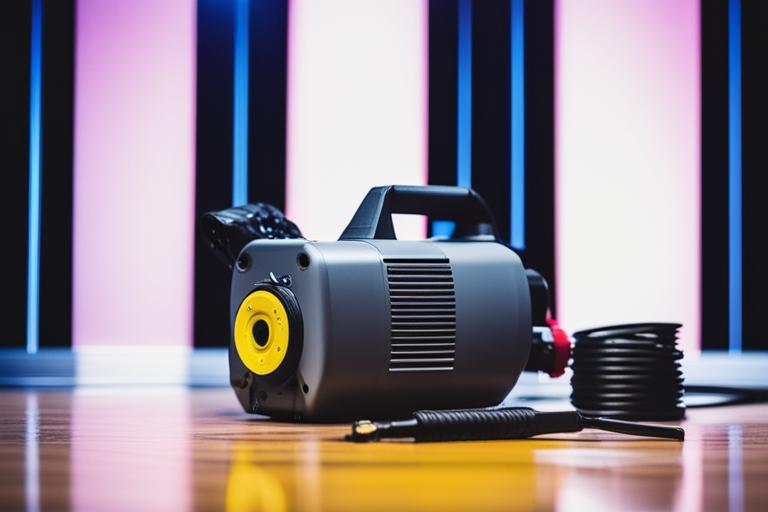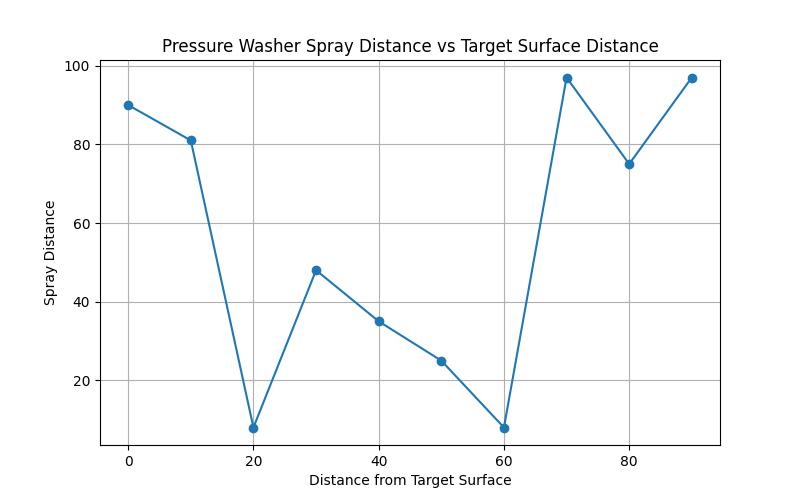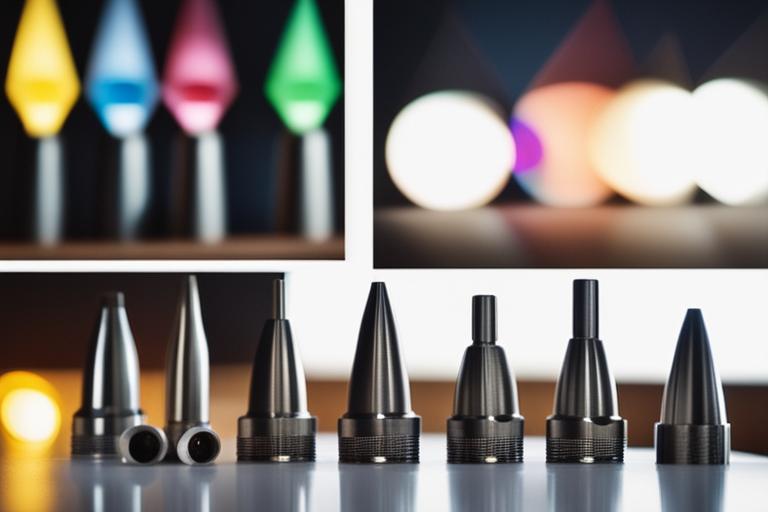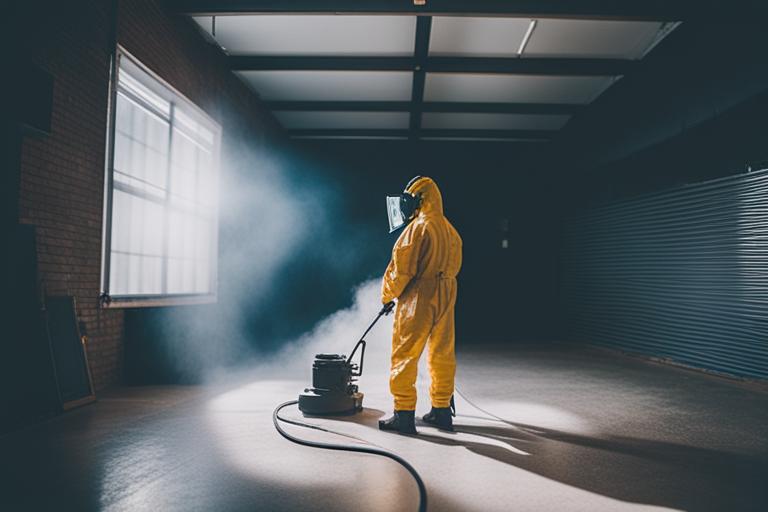If you’re in the market for a pressure washer, you’re probably wondering how far it can spray. Pressure washers are powerful tools that can blast away dirt, grime, and stains with ease. However, the distance that a pressure washer can spray depends on several factors. In this article, we’ll explore these factors and provide tips on how to optimize your machine for maximum spray distance and cleaning efficiency.
Ultimate Guide to Pressure Washer Reach
By reading this article, you will learn:
– The different factors affecting the distance of pressure washer spray such as nozzle type, pressure setting, water flow rate, and distance from the target surface.
– The different types of nozzles and which ones are best for different cleaning tasks.
– Tips on how to optimize pressure, water flow rate, and distance from the surface for maximum spray distance.

Pressure Washer Basics
Before we dive into the nitty-gritty of pressure washer spray distance, let’s review the basics of how these machines work. A pressure washer is a tool that uses a motor or engine to pump water at high pressure through a hose and wand. The pressure washer’s nozzle determines the spray pattern, and the amount of pressure and water flow rate determines the machine’s cleaning power.
There are two main types of pressure washers: gas-powered and electric. Gas-powered pressure washers are more powerful and portable, making them ideal for heavy-duty cleaning tasks. Electric pressure washers are more lightweight, quieter, and easier to maintain, making them a popular choice for homeowners.

Factors Affecting Pressure Washer Spray Distance
Several factors affect the distance that a pressure washer can spray. Understanding these factors will help you optimize your machine for maximum reach and cleaning power. The four main factors are the type of nozzle, pressure setting, water flow rate, and distance from the target surface.
Type of Nozzle
The type of nozzle you use on your pressure washer will determine the spray pattern and the distance that the water can reach. There are five main types of nozzles, each with a different spray pattern and spray distance.
- 0-degree nozzle: This nozzle produces a highly concentrated and powerful jet of water that can reach up to 40 feet. However, it is not recommended for general cleaning tasks as it can damage surfaces and cause injury.
- 15-degree nozzle: This nozzle produces a fan-shaped spray pattern that can reach up to 35 feet. It is ideal for removing dirt and grime from concrete surfaces, but it may not be powerful enough for heavy-duty cleaning tasks.
- 25-degree nozzle: This nozzle produces a wider fan-shaped spray pattern that can reach up to 30 feet. It is ideal for general cleaning tasks such as washing cars and outdoor furniture.
- 40-degree nozzle: This nozzle produces the widest fan-shaped spray pattern that can reach up to 25 feet. It is ideal for rinsing and washing delicate surfaces such as windows and wood siding.
- Soap nozzle: This nozzle produces a low-pressure spray pattern that is ideal for applying cleaning solutions and detergents to surfaces before washing them with higher pressure nozzles.
Pressure Settings
The pressure setting on your pressure washer determines the force of the water stream and, consequently, how far it can travel. Most pressure washers come with adjustable pressure settings, allowing you to control the machine’s cleaning power. However, it’s essential to use the right pressure setting for the task at hand. Using too much pressure can damage surfaces, while using too little pressure may not be effective.
Water Flow Rate
The water flow rate, measured in gallons per minute (GPM), is another critical factor that affects the spray distance of your pressure washer. The higher the GPM, the more water the machine can pump, resulting in higher cleaning power and spray distance. However, using too much water may waste water and increase your water bill.
Distance from Target Surface
The distance from the target surface also affects the spray distance of your pressure washer. The closer you are to the surface, the more powerful the water stream will be, but the shorter the spray distance will be. Conversely, the farther you are from the surface, the weaker the water stream will be, but the longer the spray distance will be. Finding the sweet spot between distance and power is essential for maximizing your cleaning efficiency.

Types of Nozzles
Now that we’ve covered the main factors that affect pressure washer spray distance, let’s dive deeper into the different types of nozzles available and their pros and cons.
0-Degree Nozzle
The 0-degree nozzle is the most powerful and concentrated nozzle available, producing a highly focused and pinpoint jet of water. However, this nozzle is not recommended for general cleaning tasks as it can damage surfaces and cause injury. It is best used for removing tough stains and grime from concrete surfaces or for cutting through thick layers of dirt and mud.
15-Degree Nozzle
The 15-degree nozzle produces a fan-shaped spray pattern that is ideal for removing dirt and grime from concrete surfaces. It can reach up to 35 feet, making it a popular choice for homeowners who want to clean their driveways and sidewalks. However, it may not be powerful enough for heavy-duty cleaning tasks.
25-Degree Nozzle
The 25-degree nozzle produces a wider fan-shaped spray pattern that is ideal for general cleaning tasks such as washing cars and outdoor furniture. It can reach up to 30 feet, making it a versatile nozzle for most cleaning tasks.
40-Degree Nozzle
The 40-degree nozzle produces the widest fan-shaped spray pattern that can reach up to 25 feet. It is ideal for rinsing and washing delicate surfaces such as windows and wood siding. However, it may not be powerful enough to remove tough stains and grime.
Soap Nozzle
The soap nozzle produces a low-pressure spray pattern that is ideal for applying cleaning solutions and detergents to surfaces before washing them with higher pressure nozzles. It does not have a spray distance as it is meant to be used in conjunction with other nozzles.
Pressure Settings
The pressure setting on your pressure washer determines the force of the water stream and, consequently, how far it can travel. Most pressure washers come with adjustable pressure settings, allowing you to control the machine’s cleaning power. However, it’s essential to use the right pressure setting for the task at hand. Using too much pressure can damage surfaces, while using too little pressure may not be effective.
For heavy-duty cleaning tasks such as removing oil stains from a concrete driveway, you may need to use a higher pressure setting. For lighter cleaning tasks such as washing a car or outdoor furniture, a lower pressure setting may be sufficient. It’s essential to start with a low pressure setting and gradually increase it until you find the right balance between power and spray distance.
Water Flow Rate
The water flow rate, measured in gallons per minute (GPM), is another critical factor that affects the spray distance of your pressure washer. The higher the GPM, the more water the machine can pump, resulting in higher cleaning power and spray distance. However, using too much water may waste water and increase your water bill.
For most cleaning tasks, a water flow rate of 2-3 GPM is sufficient. For heavy-duty cleaning tasks, you may need a higher water flow rate to get the job done. It’s essential to find the right balance between water flow rate and pressure setting to optimize your machine’s cleaning power and spray distance.
Distance from Target Surface
The distance from the target surface also affects the spray distance of your pressure washer. The closer you are to the surface, the more powerful the water stream will be, but the shorter the spray distance will be. Conversely, the farther you are from the surface, the weaker the water stream will be, but the longer the spray distance will be.
Finding the sweet spot between distance and power is essential for maximizing your cleaning efficiency. For most cleaning tasks, a distance of 6-12 inches from the surface is ideal. For heavy-duty cleaning tasks, you may need to get closer to the surface to increase the cleaning power.

Safety Considerations
While pressure washers are powerful and efficient cleaning tools, they can also be dangerous if not used correctly. It’s essential to follow these safety tips to avoid injury:
- Wear protective gear such as safety goggles, gloves, and closed-toe shoes.
- Keep the pressure washer nozzle at least six inches away from the target surface.
- Never point the pressure washer nozzle at yourself or others.
- Do not use the pressure washer on delicate surfaces such as glass or wood.
- Use caution when using the pressure washer on uneven surfaces or steep inclines.
Real-Life Case Study: Maximizing Cleaning Efficiency with a Pressure Washer
As a professional cleaning service provider, I have seen a variety of cleaning equipment and understand the importance of maximizing cleaning efficiency. Recently, I received a request to clean a large parking lot that was heavily stained with oil and grease. The client wanted the cleaning to be done quickly and efficiently, and I knew that my pressure washer would be the perfect tool for the job.
I started by selecting the right nozzle for the job. I opted for a 25-degree nozzle which provided a good balance between spray distance and cleaning power. I then adjusted the pressure setting to ensure that it was not too high or too low. I settled for a pressure of 3000 PSI which was just right for the task at hand.
Next, I adjusted the water flow rate to ensure that the pressure washer was delivering the right amount of water to the surface. I increased the flow rate to ensure that the pressure washer was not starving for water. I also ensured that I maintained a safe distance from the target surface. By doing so, I was able to maximize the spray distance while still getting the desired cleaning power.
As I worked, I kept in mind the safety considerations that come with using a pressure washer. I wore protective gear, including gloves and goggles, to protect myself from the powerful spray and debris.
In the end, the parking lot was cleaned quickly and efficiently, with no damage to the surface. By selecting the right nozzle, adjusting the pressure, water flow rate, and distance from the target surface, I was able to maximize the cleaning efficiency of my pressure washer.
FAQ
Here are some frequently asked questions related to pressure washer spray distance:
What is the maximum distance a pressure washer can spray?
The maximum distance a pressure washer can spray depends on several factors, including the type of nozzle, pressure setting, water flow rate, and distance from the target surface. In general, most pressure washers can spray water up to 40 feet.
What is the best nozzle for cleaning concrete?
The 15-degree nozzle is the best nozzle for cleaning concrete as it produces a fan-shaped spray pattern that can remove dirt and grime from concrete surfaces.
Conclusion
In conclusion, optimizing your pressure washer for maximum spray distance and cleaning efficiency requires understanding the various factors that affect the machine’s capabilities. By using the right nozzle, pressure setting, water flow rate, and distance from the target surface, you can maximize your machine’s cleaning power and reach. Remember to follow safety guidelines when using a pressure washer to avoid injury and damage to surfaces. With these tips in mind, you can make the most out of your pressure washer and keep your home’s exterior looking clean and fresh.
Follow us!!